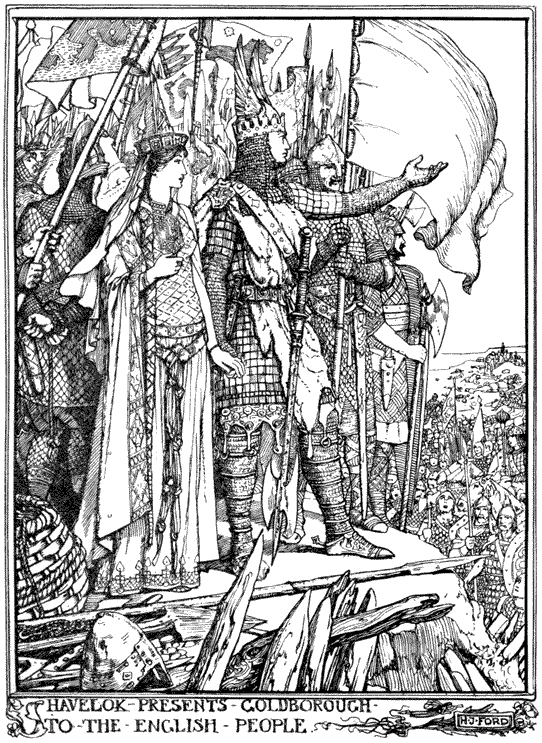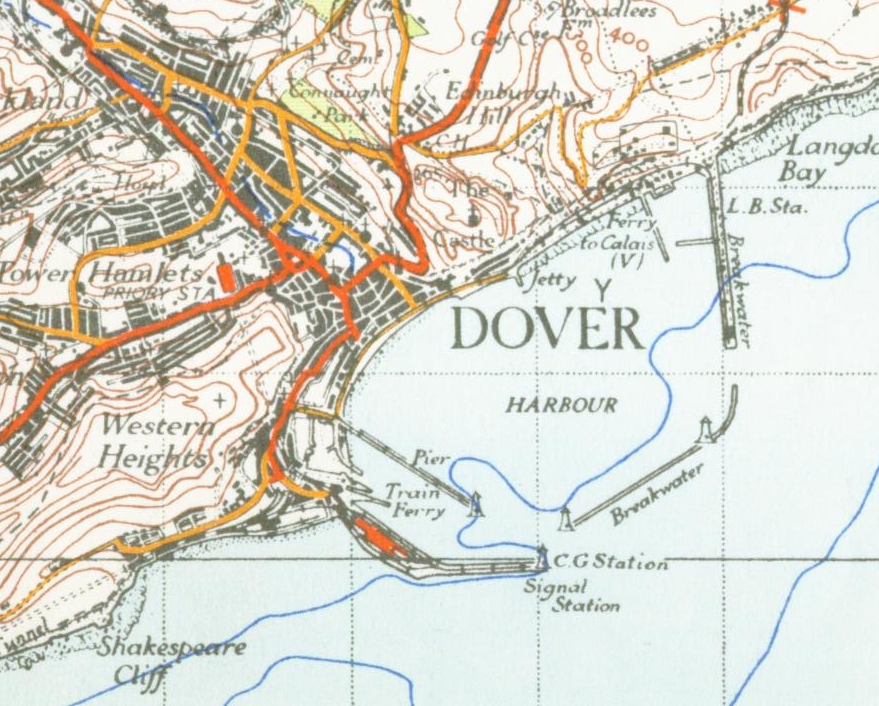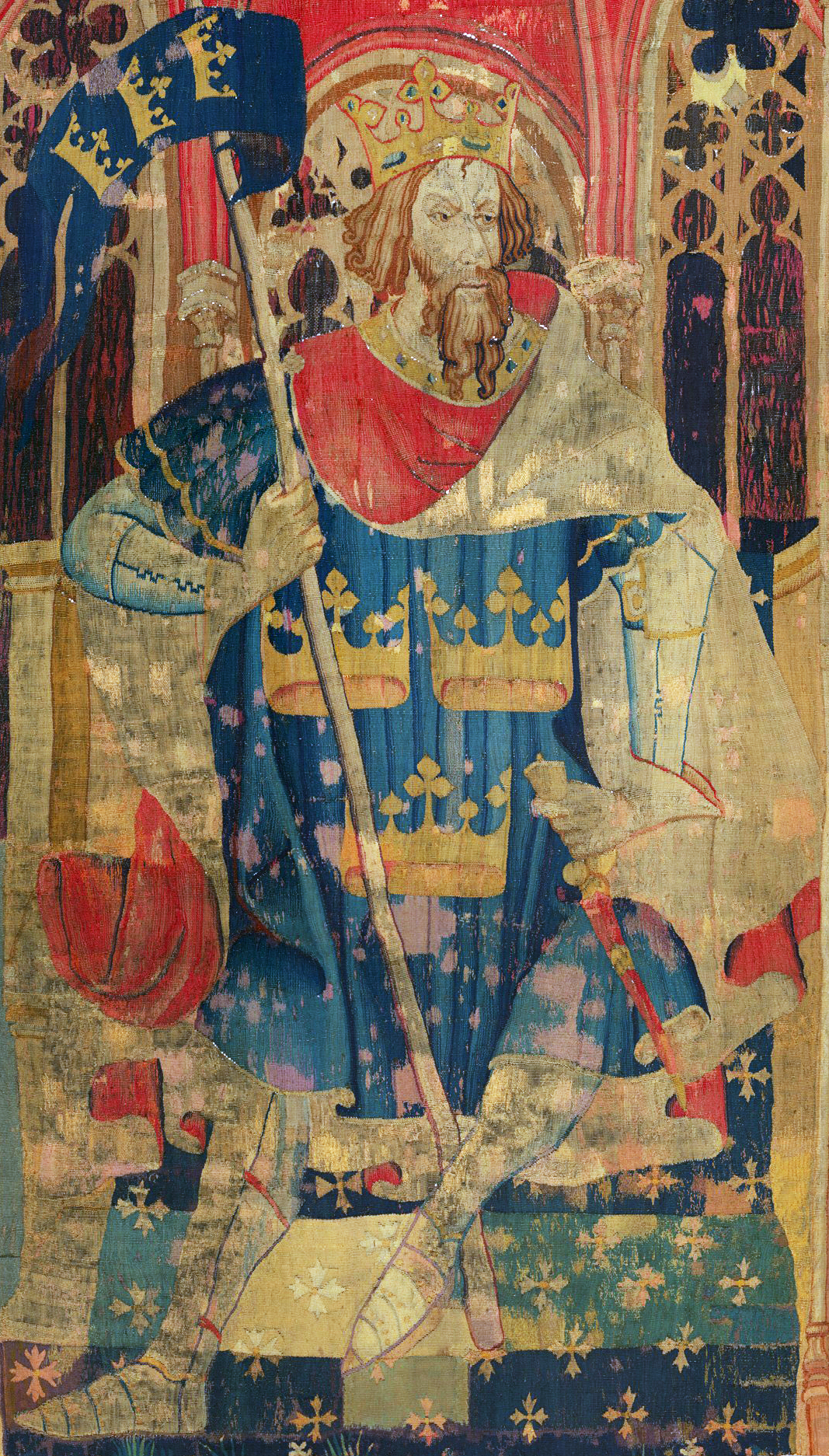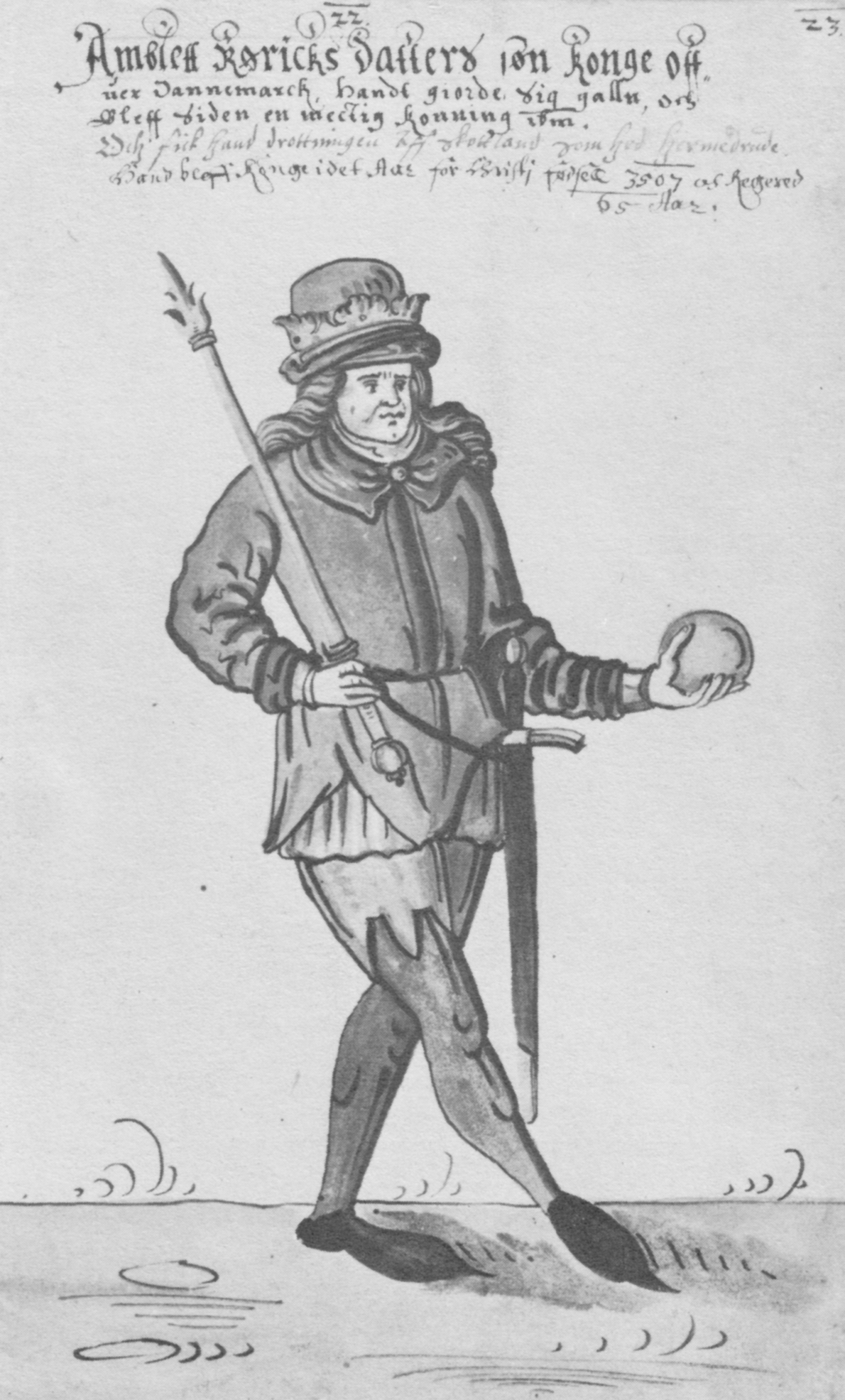|
Lay Of Haveloc
''Havelok the Dane'', also known as ''Havelok'' or ''Lay of Havelok the Dane'', is a 13th-century Middle English romance considered to be part of the Matter of England.''Boundaries in medieval romance'', Neil Cartlidge, DS Brewer, 2008, , 9781843841555. pp. 29-42 The story, however, is also known in two earlier Anglo-Norman versions, one by Geffrei Gaimar and another known as the ''Lai d'havelok''. The name "Havelok" also has many variations in spelling, and can be found as "Haveloc", "Havelock", or "Aybloc". Development of the story The story of ''Havelok'' is first told in lines 37–818 of Geoffrey Gaimar's Anglo-Norman '' Estoire des Engleis'' of about 1135–40. This was the basis for a few other Anglo-Norman poems, the ''Lai d'havelok'', which in turn may have influenced ''Havelok the Dane''. ''Havelok'' is the second oldest surviving romance written in English, after King Horn; it is believed to have been composed somewhere between 1285 and 1310. The romance survives in ... [...More Info...] [...Related Items...] OR: [Wikipedia] [Google] [Baidu] |
Havelok
''Havelok the Dane'', also known as ''Havelok'' or ''Lay of Havelok the Dane'', is a 13th-century Middle English chivalric romance, romance considered to be part of the Matter of England.''Boundaries in medieval romance'', Neil Cartlidge, DS Brewer, 2008, , 9781843841555. pp. 29-42 The story, however, is also known in two earlier Anglo-Norman language, Anglo-Norman versions, one by Geffrei Gaimar and another known as the ''Lai d'havelok''. The name "Havelok" also has many variations in spelling, and can be found as "Haveloc", "Havelock", or "Aybloc". Development of the story The story of ''Havelok'' is first told in lines 37–818 of Geoffrey Gaimar's Anglo-Norman ''Estoire des Engleis'' of about 1135–40. This was the basis for a few other Anglo-Norman poems, the ''Lai d'havelok'', which in turn may have influenced ''Havelok the Dane''. ''Havelok'' is the second oldest surviving Romance (heroic literature), romance written in English, after King Horn; it is believed to have be ... [...More Info...] [...Related Items...] OR: [Wikipedia] [Google] [Baidu] |
Matter Of Britain
The Matter of Britain (; ; ; ) is the body of medieval literature and legendary material associated with Great Britain and Brittany and the list of legendary kings of Britain, legendary kings and heroes associated with it, particularly King Arthur. The 12th-century writer Geoffrey of Monmouth's (''History of the Kings of Britain)'' is a central component of the Matter of Britain. It was one of the three great Western Literary cycle, story cycles recalled repeatedly in medieval literature, together with the Matter of France, which concerned the legends of Charlemagne and his Paladin, companions, as well as the Matter of Rome, which included material derived from or inspired by classical mythology and classical antiquity, classical history. Its pseudo-chronicle and chivalric romance works, written both in prose and verse, flourished from the 12th to the 16th century. Name The three "matters" were first described in the 12th century by French poet Jean Bodel, whose epic ' ("Song ... [...More Info...] [...Related Items...] OR: [Wikipedia] [Google] [Baidu] |
Oedipus
Oedipus (, ; "swollen foot") was a mythical Greek king of Thebes. A tragic hero in Greek mythology, Oedipus fulfilled a prophecy that he would end up killing his father and marrying his mother, thereby bringing disaster to his city and family. The story of Oedipus is the subject of Sophocles' tragedy ''Oedipus Rex'', which is followed in the narrative sequence by '' Oedipus at Colonus'' and then '' Antigone''. Together, these plays make up Sophocles' three Theban plays. Oedipus represents two enduring themes of Greek myth and drama: the flawed nature of humanity and an individual's role in the course of destiny in a harsh universe. In the best-known version of the myth, Oedipus was born to King Laius and Queen Jocasta of Thebes. Laius wished to thwart the prophecy, so he sent a shepherd-servant to leave Oedipus to die on a mountainside. However, the shepherd took pity on the baby and passed him to another shepherd who gave Oedipus to King Polybus and Queen Merope to raise ... [...More Info...] [...Related Items...] OR: [Wikipedia] [Google] [Baidu] |
Havelok Is Discovered
''Havelok the Dane'', also known as ''Havelok'' or ''Lay of Havelok the Dane'', is a 13th-century Middle English romance considered to be part of the Matter of England.''Boundaries in medieval romance'', Neil Cartlidge, DS Brewer, 2008, , 9781843841555. pp. 29-42 The story, however, is also known in two earlier Anglo-Norman versions, one by Geffrei Gaimar and another known as the ''Lai d'havelok''. The name "Havelok" also has many variations in spelling, and can be found as "Haveloc", "Havelock", or "Aybloc". Development of the story The story of ''Havelok'' is first told in lines 37–818 of Geoffrey Gaimar's Anglo-Norman '' Estoire des Engleis'' of about 1135–40. This was the basis for a few other Anglo-Norman poems, the ''Lai d'havelok'', which in turn may have influenced ''Havelok the Dane''. ''Havelok'' is the second oldest surviving romance written in English, after King Horn; it is believed to have been composed somewhere between 1285 and 1310. The romance survives in ... [...More Info...] [...Related Items...] OR: [Wikipedia] [Google] [Baidu] |
Dover
Dover ( ) is a town and major ferry port in Kent, southeast England. It faces France across the Strait of Dover, the narrowest part of the English Channel at from Cap Gris Nez in France. It lies southeast of Canterbury and east of Maidstone. The town is the administrative centre of the Dover District and home of the Port of Dover. Archaeological finds have revealed that the area has always been a focus for peoples entering and leaving Great Britain, Britain. The name derives from the River Dour that flows through it. In recent times the town has undergone transformations with a high-speed rail link to London, new retail in town with St James' area opened in 2018, and a revamped promenade and beachfront. This followed in 2019, with a new 500m Pier to the west of the Harbour, and new Marina unveiled as part of a £330m investment in the area. It has also been a point of destination for many English Channel migrant crossings (2018-present), illegal migrant crossings. The Port ... [...More Info...] [...Related Items...] OR: [Wikipedia] [Google] [Baidu] |
Earl Of Cornwall
The title of Earl of Cornwall was created several times in the Peerage of England before 1337, when it was superseded by the title Duke of Cornwall, which became attached to heirs-apparent to the throne. Condor of Cornwall *Condor of Cornwall, probably legendary Earl of Cornwall before the Conquest, said to have paid homage to William for the Earldom Earls of Cornwall, 1st creation (1068) *Brian of Brittany (–1084 or 85), resigned Earls of Cornwall, 2nd creation (c. 1072) *Robert, Count of Mortain (c. 1038–1095), half-brother of William the Conqueror *William, Count of Mortain (1084–1140), peerage forfeit 1106 Cadoc II of Cornwall (c. 1106) *Cadoc II (or Candor), son of Cadoc of Cornwall Earls of Cornwall, 1st creation (revived 1140) *Alan, 1st Earl of Richmond, Alan (died 1146), nephew of Brian, deprived 1141 Earls of Cornwall, 3rd creation (1141) * Reginald de Dunstanville, Earl of Cornwall (died 1175), illegitimate son of King Henry I of England Earls of Cornwall, ... [...More Info...] [...Related Items...] OR: [Wikipedia] [Google] [Baidu] |
King Arthur
According to legends, King Arthur (; ; ; ) was a king of Great Britain, Britain. He is a folk hero and a central figure in the medieval literary tradition known as the Matter of Britain. In Wales, Welsh sources, Arthur is portrayed as a leader of the Sub-Roman Britain, post-Roman Britons in battles against the Anglo-Saxons in the late-5th and early-6th centuries. He first appears in two early medieval historical sources, the ''Annales Cambriae'' and the ''Historia Brittonum'', but these date to 300 years after he is supposed to have lived, and most historians who study the period Historicity of King Arthur, do not consider him a historical figure.Tom Shippey, "So Much Smoke", ''review'' of , ''London Review of Books'', 40:24:23 (20 December 2018) His name also occurs in early Welsh-language literature, Welsh poetic sources, such as ''Y Gododdin''. The character developed through Welsh mythology, appearing either as a great warrior defending Britain from human and supernatura ... [...More Info...] [...Related Items...] OR: [Wikipedia] [Google] [Baidu] |
Constantine (Briton)
Constantine (, , fl. 520–523) was a 6th-century king of Dumnonia in sub-Roman Britain, who was remembered in later British tradition as a legendary King of Britain. The only contemporary information about him comes from Gildas, who castigated him for various sins, including the murder of two "royal youths" inside a church. The historical Constantine is also known from the genealogies of the Dumnonian kings, and possibly inspired the tradition of Saint Constantine, a king-turned-monk venerated in southwest Britain and elsewhere. In the 12th century, Geoffrey of Monmouth included Constantine in his pseudohistorical chronicle ''Historia Regum Britanniae'', adding details to Gildas' account and making Constantine the successor to King Arthur as King of Britain. Under Geoffrey's influence, Constantine appeared as Arthur's heir in later chronicles. Less commonly, he also appeared in that role in medieval Arthurian romances and prose works, and in some modern versions of the lege ... [...More Info...] [...Related Items...] OR: [Wikipedia] [Google] [Baidu] |
Amleth
Amleth (; Latinized as ''Amlethus'') is a figure in a medieval Scandinavian legend, the direct inspiration of the character of Prince Hamlet, the hero of William Shakespeare's tragedy '' Hamlet, Prince of Denmark''. The chief authority for the legend of Amleth is Saxo Grammaticus, who devotes to it parts of the third and fourth books of his '' Gesta Danorum'', completed at the beginning of the 13th century. Saxo's version is supplemented by Latin and vernacular compilations from a much later date. In all versions, prince Amleth (''Amblothæ'') is the son of Horvendill (''Orwendel''), king of the Jutes. It has often been assumed that the story is ultimately derived from an Old Icelandic poem, but no such poem has been found; the extant Icelandic versions, known as the ''Ambales-saga'' or ''Amloda-saga'', are considerably later than Saxo. Amleth's name is not mentioned in Old-Icelandic regnal lists before Saxo. Only the 15th-century ''Sagnkrønike'' from Stockholm may contain som ... [...More Info...] [...Related Items...] OR: [Wikipedia] [Google] [Baidu] |
Amlaíb Cuarán
Amlaíb mac Sitric (d. 980; ), commonly called Amlaíb Cuarán (O.N.: ), was a 10th-century Norse-Gael who was King of Northumbria and Dublin. His byname, ''cuarán'', is usually translated as "sandal". His name appears in a variety of anglicized forms, including Olaf Cuaran, Anlaf Sihtricson and Olaf Sihtricson, particularly in relation to his short-lived rule in York. He was the last of the Uí Ímair to play a major part in the politics of the British Isles. Amlaíb was twice, perhaps three times, ruler of Northumbria and twice ruler of Dublin and its dependencies. His reign over these territories spanned some forty years. He was a renowned warrior and a ruthless pillager of churches, but ended his days in retirement at Iona Abbey. Born when the Uí Ímair ruled over large areas of the British Isles, by his death the kingdom of Dublin was a minor power in Irish politics. At the same time, Dublin became a major centre of trade in Atlantic Europe and mastery over the city and ... [...More Info...] [...Related Items...] OR: [Wikipedia] [Google] [Baidu] |
Grimsby Institute Of Further And Higher Education
Grimsby Institute of Further & Higher Education and University Centre Grimsby (often Grimsby Institute or GIFHE or Grimsby College or UCG) is a further education college, and higher education university in Grimsby in North East Lincolnshire in England. Grimsby Institute of Further & Higher Education is one of England’s largest providers of further and higher education. The college specialises in vocational education and provides a range of training course in further education, higher education, apprenticeships and adult training courses across multiple campuses and consists of multiple brands including The Academy Grimsby (TAG), Career 6, Workforce Skills, Skegness TEC, and National Employer Training (NET). Grimsby Institute of Further & Higher Education is part of the TEC Partnership, one of the largest education, training and employability organisations in the UK. On 4 May 2017, Ofsted graded the college as 'Outstanding'. History Grimsby College of Further Education It wa ... [...More Info...] [...Related Items...] OR: [Wikipedia] [Google] [Baidu] |







